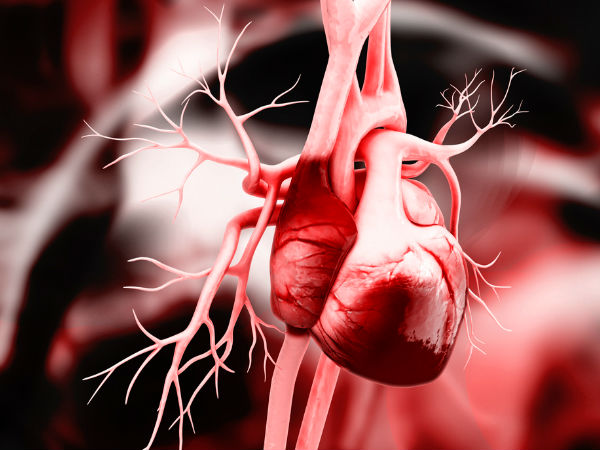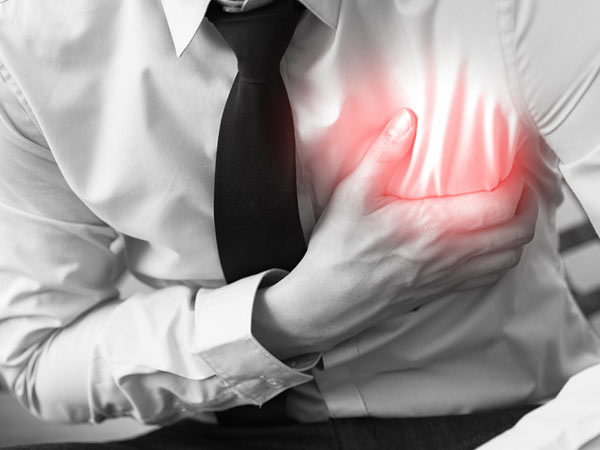Just In
- 4 hrs ago

- 7 hrs ago

- 11 hrs ago

- 14 hrs ago

Don't Miss
- News
 BRS Chief K Chandrasekhar Rao Slams BJP, Says K Kavitha's Arrest Is Vendetta Politics
BRS Chief K Chandrasekhar Rao Slams BJP, Says K Kavitha's Arrest Is Vendetta Politics - Finance
 LIC New Jeevan Shanti 858 Plan: How To Earn Rs 10,000 Pension Per Month After Retirement? Check Eligibility!
LIC New Jeevan Shanti 858 Plan: How To Earn Rs 10,000 Pension Per Month After Retirement? Check Eligibility! - Sports
 PBKS vs MI, IPL 2024: 'Jasprit Bumrah is the Greatest Match Winner' - Twitter Hails MI Pacer after Amazing Bowling
PBKS vs MI, IPL 2024: 'Jasprit Bumrah is the Greatest Match Winner' - Twitter Hails MI Pacer after Amazing Bowling - Movies
 Yeh Rishta Kya Kehlata Hai Controversy: YRKKH Actor Makes BIG Revelation About Shehzada Dhami: Alag Dhang Se K
Yeh Rishta Kya Kehlata Hai Controversy: YRKKH Actor Makes BIG Revelation About Shehzada Dhami: Alag Dhang Se K - Automobiles
 Aprilia RS 457 Accessories: A Detailed Look At The Prices
Aprilia RS 457 Accessories: A Detailed Look At The Prices - Education
 Karnataka SSLC Result 2024 Soon, Know How to Check Through Website, SMS and Digilocker
Karnataka SSLC Result 2024 Soon, Know How to Check Through Website, SMS and Digilocker - Technology
 Nothing Ear, Ear a With ANC, Up to 42.5 Hours of Battery Launched; Check Price and Availability
Nothing Ear, Ear a With ANC, Up to 42.5 Hours of Battery Launched; Check Price and Availability - Travel
Telangana's Waterfall: A Serene Escape Into Nature's Marvels
Atrial Fibrillation: Causes, Symptoms, Treatment & Prevention
Atrial fibrillation is characterized by irregular heartbeat (arrhythmia) that increases the risk of blood clots, stroke, heart failure and other heart-related complications [1] .

What Causes Atrial Fibrillation?
The heart consists of four chambers - two upper chambers (atria) and two lower chambers (ventricles).
Normally, the body's electric signals are sent out to your heart to contract and pump blood throughout the body, which is called a normal, regular heartbeat. These tiny electric signals are produced by a part of the heart called the sinus node.
In atrial fibrillation, the electric signals become irregular in and around the atria (the upper chambers of the heart). This makes the atria twitch, which is known as fibrillation and it leads to irregular and rapid heartbeat.
When the upper chambers of the heart experience chaotic electric signals, the result is a fast and irregular heart rhythm which may range from 100 to 175 beats a minute. The normal heartbeat range is 60 to 100 beats a minute.
Other possible causes of atrial fibrillation include the following:
- High blood pressure
- Coronary artery disease
- Heart attacks
- Abnormal heart valves
- Overactive thyroid gland
- Lung diseases
- Sick sinus syndrome
- Congenital heart disease
- Exposure to stimulants like alcohol, caffeine, tobacco, and medications
- Viral infections
- Previous heart surgery
- Sleep apnoea
- Stress caused by pneumonia, surgery or other illnesses
Types Of Atrial Fibrillation
1. Occasional - This type of atrial fibrillation is called paroxysmal atrial fibrillation. The symptoms come and go, which last for a few minutes to hours and then completely stop on their own.
2. Persistent - The heartbeat doesn't go back to normal on its own and is treated with electrical shock or medications to get back to the normal heartbeat.
3. Long-standing persistent - This is continuous and lasts longer than 12 months.
4. Permanent - The abnormal heartbeat can't be restored in this type of atrial fibrillation as it is permanent and treatment includes medications to control the heart rate.
Symptoms Of Atrial Fibrillation [2]
Some people might not experience any signs or symptoms until and unless he/she has had a physical examination during diagnosis. However, the symptoms of atrial fibrillation are as follows:
- Heart palpitations
- Weakness
- Confusion
- Fatigue
- Light-headedness
- Reduced ability to exercise
- Dizziness
- Chest pain
- Shortness of breath

Risk Factors Of Atrial Fibrillation [3]
- Heart disease
- Age
- High blood pressure
- Drinking alcohol
- Obesity
- Other chronic conditions such as metabolic syndrome, diabetes, chronic kidney disease, thyroid problems, sleep apnea, and lung disease
- Family history
Complications Of Atrial Fibrillation [4]
- Heart failure - If atrial fibrillation isn't controlled, it may lead to heart failure.
- Stroke - The irregular heartbeat can cause blood to accumulate in the atria and form clots. If a blood clot forms, it leads to stroke.
When To See A Doctor
If you experience any of the above-mentioned symptoms, consult a doctor. The doctor will conduct an electrocardiogram to determine if your symptoms are that of atrial fibrillation.
Diagnosis Of Atrial Fibrillation
The doctor might use the following methods to diagnose atrial fibrillation.
- Electrocardiogram (ECG) - Small sensors are attached to your chest and arms to record electrical signals as they travel through the heart.
- Holter monitor - This ECG device is worn on a belt or shoulder strap and records the heart's activity for 24 hours or longer.
- Event recorder - This ECG device monitors the heart activity over a few weeks to a few months.
- Echocardiogram - In this type of diagnostic test, sound waves are used to produce a video image of your heart to detect underlying structural heart disease.
Other tests like blood tests, stress test and chest X-ray are done.

Treatment Of Atrial Fibrillation
The treatment depends on how long you have had atrial fibrillation, how severe your symptoms are, and any underlying cause of atrial fibrillation. The treatment procedures are as follows:
- Resetting the heart rhythm - The heart rate and rhythm are reset to normal using a procedure called cardioversion, depending on the underlying cause of atrial fibrillation. Before cardioversion, blood-thinning medications are prescribed for several weeks to lower the risk of blood clots and stroke.
- Preventing blood clots - Blood-thinning medications (anticoagulants) such as warfarin, dabigatran, and apixaban are used for preventing strokes.
- Surgical procedures - Sometimes medications and cardioversion can't control atrial fibrillation. In this case, the doctor recommends a procedure to destroy the area of heart tissue that is causing erratic electrical signals to restore normal heart rhythm. These procedures are catheter ablation, surgical maze procedure, and atrioventricular (AV) node ablation.
Prevention Of Atrial Fibrillation
- Eat foods that will keep your heart healthy
- Quit smoking
- Increase in physical activity
- Maintain a healthy weight
- Lower your stress
- Limit the consumption of alcohol and caffeine
- Use over-the-counter medications with caution
- [1] Raja, D. C., & Kapoor, A. (2016). Epidemiology of Atrial Fibrillation-An Indian Perspective.J assoc Physicians of India, 7-10.
- [2] Rienstra, M., Lubitz, S. A., Mahida, S., Magnani, J. W., Fontes, J. D., Sinner, M. F., … Benjamin, E. J. (2012). Symptoms and functional status of patients with atrial fibrillation: state of the art and future research opportunities.Circulation,125(23), 2933–2943.
- [3] Perez, M. V., Wang, P. J., Larson, J. C., Soliman, E. Z., Limacher, M., Rodriguez, B., ... & Connelly, S. (2013). Risk factors for atrial fibrillation and their population burden in postmenopausal women: the Women's Health Initiative Observational Study.Heart,99(16), 1173-1178.
- [4] Falk, R. H. (1998). Etiology and complications of atrial fibrillation: insights from pathology studies.The American journal of cardiology,82(7), 10N-17N.
-
 healthTV Actor Rituraj Singh Dies Of Cardiac Arrest: Causes And Symptoms, How It Is Different From Heart Attack
healthTV Actor Rituraj Singh Dies Of Cardiac Arrest: Causes And Symptoms, How It Is Different From Heart Attack -
 healthHow A Heartbreak Can Affect Your Brain And Ways To Overcome And Heal It Post Breakup
healthHow A Heartbreak Can Affect Your Brain And Ways To Overcome And Heal It Post Breakup -
 insyncValentine's Day 2024: Is Origin Of Heart Symbol Associated With A Plant Seed? Here's What You Need To Know
insyncValentine's Day 2024: Is Origin Of Heart Symbol Associated With A Plant Seed? Here's What You Need To Know -
 healthWorld Heart Day 2023: 5 Benefits Of Eating Chicken Hearts For Heart Patients
healthWorld Heart Day 2023: 5 Benefits Of Eating Chicken Hearts For Heart Patients -
 healthGain Control of Your Stress and Guard Your Heart!
healthGain Control of Your Stress and Guard Your Heart! -
 healthIndian Women's Silent Battle with Cardiac Health
healthIndian Women's Silent Battle with Cardiac Health -
 healthHeart Health: Which Exercise Is Best To Reduce Stroke Risk?
healthHeart Health: Which Exercise Is Best To Reduce Stroke Risk? -
 healthBoost Your Heart Health With These Five Exercises
healthBoost Your Heart Health With These Five Exercises -
 pregnancy parentingBipasha Basu Talks About Daughter Devi's Open Heart Surgery: When Do Infants Need A Heart Surgery?
pregnancy parentingBipasha Basu Talks About Daughter Devi's Open Heart Surgery: When Do Infants Need A Heart Surgery? -
 healthHeart-Healthy Breakfast: Discover The Benefits Of Frozen Strawberries
healthHeart-Healthy Breakfast: Discover The Benefits Of Frozen Strawberries -
 healthEmerging Role Of Wearable Technology In Cardiovascular Disease Prevention And Management
healthEmerging Role Of Wearable Technology In Cardiovascular Disease Prevention And Management -
 healthExpert Article: How To Identify If Arrhythmias Are Life-threatening?
healthExpert Article: How To Identify If Arrhythmias Are Life-threatening?


 Click it and Unblock the Notifications
Click it and Unblock the Notifications



